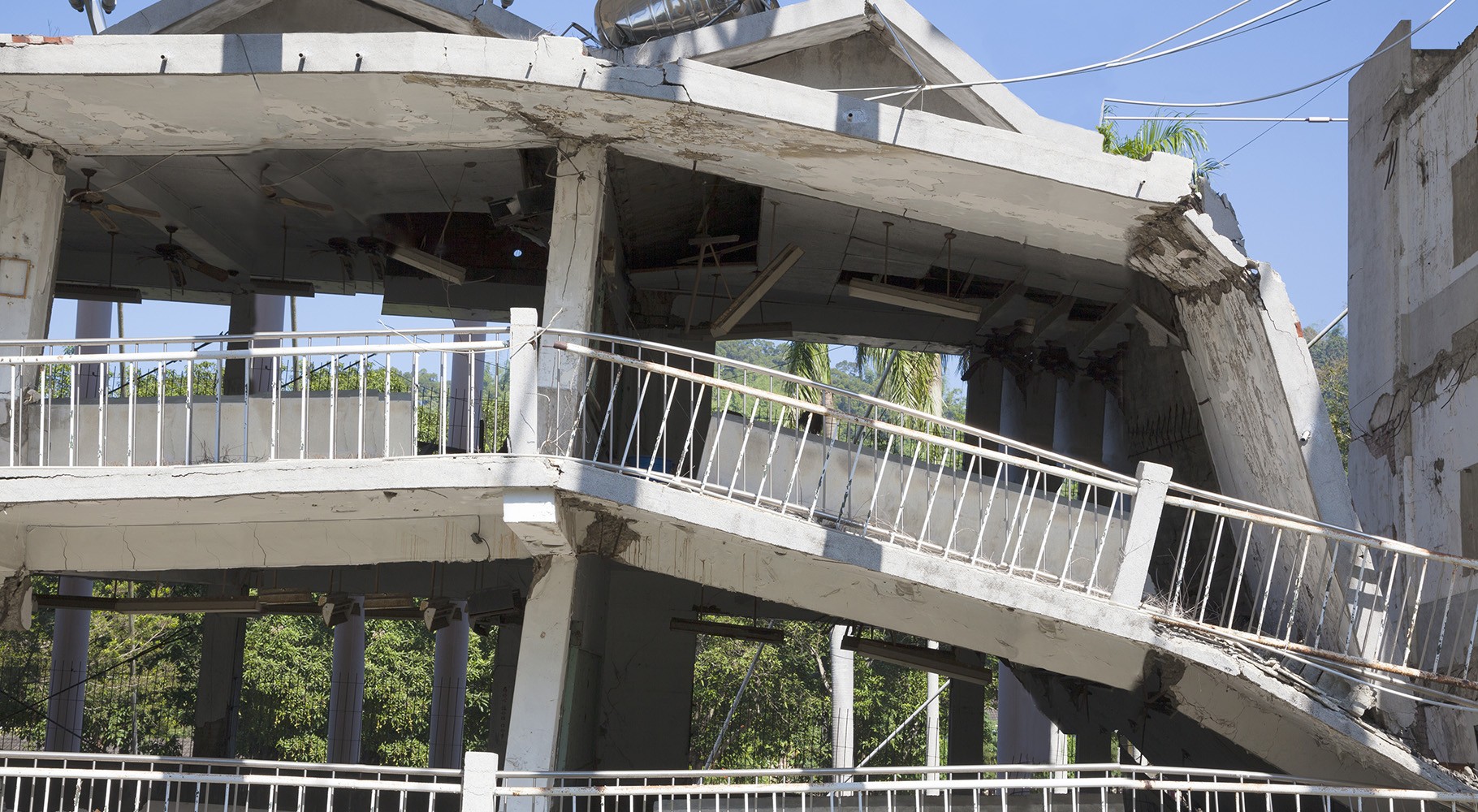Non-Ductile Concrete Structures
What is a non-ductile reinforced concrete building?
Non-ductile reinforced concrete buildings are prone to brittle behavior in parts of the building such as joints and columns. In short, these buildings were constructed with configurations that cause stress concentrations in locations that have a limited amount of reinforcing steel in details related to columns, joints, and walls, thus making them susceptible to damage and failure during strong seismic events.
Is my concrete building non-ductile?
A large number of concrete buildings designed and built prior to the implementation of the 1976 Uniform Building Code fall under this category. This building code was adopted by many jurisdictions in the late 1970s, although some cities may not have adopted this code until the 1980s. A structural evaluation performed by a licensed civil engineer, structural engineer, or architect experienced in seismic assessment and retrofit is necessary to determine whether a building’s structure includes details that would qualify the building as a non-ductile reinforced concrete building.

Why must they be retrofitted?
Multiple seismic events—including the Mexico City earthquake (1985), Northridge earthquake (1994), Great Hanshin earthquake (1995), Christchurch earthquake (2011), and Kumamoto earthquakes (2016)—drew attention to the hazards of concrete buildings constructed under outdated building codes. Structures of this type exhibited poor performance due to the lack of adequate confinement of the concrete core within the beams, columns, and joints. When subjected to lateral movements during an earthquake, which cause inadequately confined concrete cores to break up, these structures are often unable to sustain gravity loads, making them vulnerable to collapse. DLJCSS and SEAOSC published the 2016 Safer Cities Survey to provide information regarding vulnerable building types and the development of seismic ordinances in six counties in California. Retrofitting non-ductile concrete buildings is necessary to correct these inadequacies and improve anticipated performance of the building in future seismic events.
What action is necessary?
Buildings categorized as non-ductile reinforced concrete construction must undergo a structural analysis by a qualified design professional. The type of analysis that must be done is defined in the seismic ordinance and may be quite extensive, depending on the complexities of the building. Currently, guidelines are being developed to try to screen non-ductile concrete buildings to minimize the effort required to identify whether a building is seismically vulnerable. If the building does not meet the minimum earthquake standards specified by the ordinance, it must be either retrofitted to improve the lateral-force restraining system, or demolished. As required by the ordinance, tenants of any non-ductile concrete building must be notified of the structure’s status. Refer to your municipality’s ordinance for more information.
How can non-ductile reinforced concrete buildings be retrofitted?
Retrofitting non-ductile concrete buildings can be quite involved and disruptive. Possible retrofitting techniques include the addition of appropriately designed concrete shear walls, addition of steel braced frames, and several other types of structural intervention. It is recommended to seek expert advice in order to select the most practical and economical solution for each unique structure.
What is the compliance timeline?
Each municipality has a unique timeline that specifies deadlines for assessment, tenant notification, and retrofit. See the links for more detail on the timeline for your municipality.


